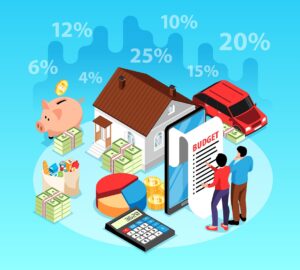Understanding the Importance of ROI of a Property Management Systems

Key Performance Indicators (KPIs) for Measuring ROI
- Occupancy rate
- Tenant retention rate
- Rent collection efficiency
- Maintenance response time
- Total operating expenses
- Calculating the ROI of Your Property Management System
- Calculate the total cost of purchasing and maintaining your PMS
- Calculate the cost savings and benefits provided by your PMS
- Subtract the total cost of ownership from the full benefits
- Divide the net gain by the total cost of ownership
- Analyze the results
- Additional Factors to Consider When Evaluating ROI
- Tenant satisfaction
- Staff satisfaction and productivity
- Scalability
- Integration capabilities
Understanding the Importance of ROI of a Property Management Systems
Before diving into the metrics and calculations, it’s essential to understand why measuring the ROI of a PMS is crucial for property managers and real estate professionals. By quantifying the value of your investment, you can:- Justify the cost of implementing and maintaining a property management system.
- Identify areas for improvement or optimization in your property management processes.
- Evaluate the effectiveness of your PMS compared to other solutions or manual processes.
- Make informed decisions about upgrading or changing your property management software.
- Key Performance Indicators (KPIs) for Measuring ROI
Occupancy rate
The occupancy rate is a percentage of occupied units in your portfolio. A higher occupancy rate indicates that your PMS effectively markets your properties, screens tenants, and minimises vacancies.Tenant retention rate
Tenant retention is the percentage of tenants who renew their leases. A higher retention rate signifies a positive tenant experience, attributed to efficient property management processes facilitated by your PMS.Rent collection efficiency
Rent collection efficiency is the percentage of rent collected on time. A higher rent collection efficiency indicates that your PMS is effectively streamlining rent collection and payment processes, reducing late or missed payments.Maintenance response time
Maintenance response time is the average time it takes to address maintenance requests. A shorter response time indicates that your PMS effectively manages and tracks maintenance tasks, leading to satisfied tenants and well-maintained properties.Total operating expenses
Total operating expenses are operating and maintaining your properties, including staff salaries, maintenance, and overhead. A lower total operating cost signifies that your PMS is helping you manage your properties cost-effectively.- Calculating the ROI of Your Property Management System
- When calculating its ROI, you must consider the costs and benefits of implementing and maintaining your PMS.
- The return on Investment can be determined by following these steps.
- Calculate the total cost of purchasing and maintaining your PMS
- Costs include the initial purchase or subscription price, implementation and training costs, ongoing maintenance and support fees, and additional hardware, software, or third-party integration costs.
Calculate the cost savings and benefits provided by your PMS
Consider the following factors:Time savings
Calculate the time saved by automating manual tasks like rent collection, lease management, and maintenance requests. Multiply this time savings by the average hourly wage of your property management staff to determine the monetary value of these time savings.Increased revenue
Determine the additional revenue your PMS generates through higher occupancy rates, improved tenant retention, and more efficient rent collection. It can be calculated by comparing your current income with your historical revenue before implementing the PMS.Reduced operating expenses
Using your PMS, calculate the cost savings achieved by reducing staff hours, maintenance expenses, and overhead. It can be determined by comparing your current operating and historical expenses before implementing the PMS.- Subtract the total cost of ownership from the full benefits
- This calculation will give you the net gain (or loss) associated with your PMS investment.
- Divide the net gain by the total cost of ownership
- It will give you the ROI percentage of your PMS investment.
Analyze the results
If the ROI percentage is positive, your PMS investment yields a return. A higher ROI percentage indicates a more significant return on investment. If the ROI percentage is negative, your PMS may not provide the expected value, and you may need to reevaluate your system or processes.Additional Factors to Consider When Evaluating ROI
While the calculations outlined above provide a general understanding of the ROI of your property management system, it’s essential to consider additional qualitative factors that may need to be more easily quantifiable. These factors can provide a more holistic understanding of your PMS’s value and help you make informed decisions about your property management processes.Tenant satisfaction
The overall satisfaction of your tenants can be a critical factor in determining the success of your PMS. Happy tenants are more likely to renew their leases and recommend your properties to others, increasing occupancy rates and revenue. Consider conducting tenant satisfaction surveys and monitoring online reviews to gauge the impact of your PMS on tenant satisfaction.Staff satisfaction and productivity
Your PMS should also improve your property management staff’s happiness and productivity. A user-friendly system that streamlines tasks and reduces manual labor can lead to higher staff morale, lower turnover rates, and increased efficiency. Solicit feedback from your team and monitor staff performance to evaluate the impact of your PMS on staff satisfaction and productivity.Scalability
Choosing property management software that can grow your business is crucial. Consider whether your current system can accommodate additional properties, tenants, and staff without compromising efficiency or performance. A scalable PMS is crucial to ensuring long-term ROI and the continued success of your property management operations.Integration capabilities
Your PMS should seamlessly integrate with other essential software systems and platforms, such as accounting software, tenant screening services, and maintenance management tools. Effective integration can streamline your property management processes, reduce data entry errors, and improve overall efficiency, contributing to a higher ROI. Real estate professionals and property managers looking to optimize their operations and make informed decisions about their software investments need to measure the ROI of their property management systems.Conclusion
By tracking key performance indicators, calculating cost savings and benefits, and considering qualitative factors such as tenant and staff satisfaction, you can comprehensively understand your PMS’s value and ensure you’re getting the most out of your investment. Are you ready to optimize your ROI of a property management system operations and maximize it? Don’t wait any longer! Request a Demo of our cutting-edge property management system and experience the efficiency improvements and cost savings our solution can offer first-hand. Our team of experts is standing by to help you streamline your processes, enhance tenant satisfaction, and grow your business.Frequently Asked Questions
What is the average time it takes to implement a property management system?
The implementation time varies based on your property portfolio size, your operation complexity, and the integrations you require. Implementing a property management system can typically take a few weeks to a few months.
How can I ensure my staff is appropriately trained to use the property management system?
Many property management system providers offer comprehensive training and support, including video tutorials, user guides, webinars, and individual instruction. It’s essential to allocate sufficient time and resources for staff training to ensure a smooth transition and maximise the benefits of your new system.
Can I customise my property management system to fit my unique business needs?
The software offered by many property management systems can be customised and tailored to suit your needs and preferences.
Is my data secure in a cloud-based property management system?
Reputable property management system providers prioritise data security and utilise advanced encryption methods, secure data centres, and regular backups to protect your sensitive information. Be sure to inquire about the specific security measures and protocols when evaluating a property management system.
